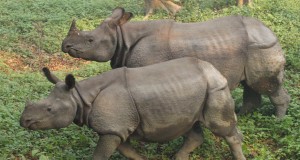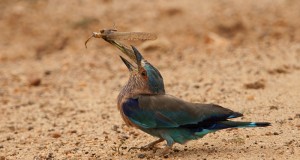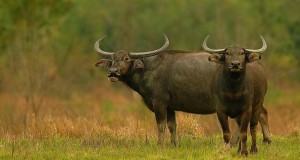HIMACHAL PRADESH: This state rises from the plains of the Punjab to the Great Himalaya and the Tibetan plateau beyond. Because of the range in altitude, the state has a wide range of flora and fauna. 28 areas are protected, including one national park. Most of the sanctuaries are in areas unconnected by public transport. The most enjoyable and in fact the only practical way to visit most of the areas is by trekking. It is possible to trek in much of Himachal and to buy food in many villages, although acouple of days’ food should always be carried. One of the threats to Himachal’s sanctuaries is the human pressure and continued exploitation of the forests. The birdlife is rich and varied. Most of the sanctuaries are in the temperate and subtropical areas of the lower Himalaya.
Chail Sanctuary
Established in 1975, with 42 sq miles (158 sq km) of subtropical pine and temperate forest. Good bird-viewing, including chir pheasants, leopards and martens. Best time to visit: Mar.—Dec. Accommodation: resthouses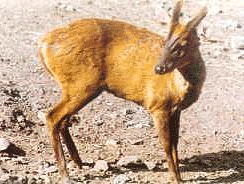 with 14 beds in the sanctuary; Palace Hotel, Chail, HP 173217 (Tel: 3743) Permission: Chief Wildlife Warden, Shimla, HP. Nearest town: Shimla (28 miles/45 km) Rail: Kandaghat (7.5 miles/12 km) Air: Chandigarh (73 miles/118 km)
with 14 beds in the sanctuary; Palace Hotel, Chail, HP 173217 (Tel: 3743) Permission: Chief Wildlife Warden, Shimla, HP. Nearest town: Shimla (28 miles/45 km) Rail: Kandaghat (7.5 miles/12 km) Air: Chandigarh (73 miles/118 km)
Daran Ghati Sanctuary
Established in 1974 with 64 sq miles (167 sq kiln ) of temperate and mixed coniferous forest. Among the mammals are leopards, musk deer, civets, martens, bears and gorals, and mona , kaleej and kokia pheasants. Best time to visit: Apr.—July, Sept.—Oct. Accommodation: 4 resthouses Permission: Chief Wildlife Warden, Simla , HP Nearest town: Rampur (37 miles/65 km) Rail: Shimla (155 miles/165 km) Air: Chandigarh (172 miles/277 km)
Govind Sagar Sanctuary
Established in 1974 to include the wetland and shore of the Govind Sagar reservoir, (38 sq miles/155 sq km). Migratory water birds. Best time to visit: Oct.—Dec. Accommodation: 5 resthouses Permission: Chief Wildlife Warden, Shimla Nearest town: Bilaspur (3.5 miles/6 km) Rail: Kiratpur (16 miles/35 km) Air: Chandigarh (44 miles/75 km)
Great Himalayan N.P
Established in 1984, this is the largest of Himachal’s protected areas covering 669 sq miles (1736 sq km) to the southeast of Kulu. The Sainj and Tirthan valleys are less disturbed than many parts of Himachal and hold good populations of many species. There is also a tremendous variety of birds. Best time to visit: Apr.—June, Sept.—Oct. Accommodation: resthouses Permission: DFO, WL Division, Kulu, HP Nearest town: Kulu (37 miles/65 km) Air: Bhuntar (31 miles/55 km)
Kalatop Khajjur Sanctuary
Established in 1958, this small area, 18 sq miles (47 sq km), of mixed temperate forest is a few miles from the hill station of Dalhousie. Ranges from 3888 to 8753 feet (1185 to 2668 meters) above sea level. Mona pheasants, woodland birds and hawks. Best time to visit: May—June, Sept.—Nov. Accommodation: 5 resthouses Permission: DEO, WL Division, Chamba, Himachal Pradesh Nearest town: Dalhousie (3.5 miles/6 km) Rail: Pathankot (53 miles/86 km) Air: Jammu (121 miles/194 km)
Kanawer Sanctuary
Established in 1954 on 2.33 sq miles (6 sq km) of mixed forest with deodar, oak, pine etc, 22 miles (35 km) east of Kulu on the n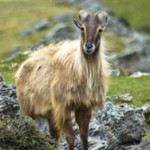 orth side of Parbati river. Altitudes range from 5900 to 15,856 feet (1800 to 4833 meters). Bahr , serow, gorat, bharal, musk deer and leopard are among the animals, and kokla, kale , chir and western tragopan among the pheasants seen. Best time to visit: May—June, Sept.—Oct. Accommodation: 4 resthouses Permission: DEO, WL Division, Kulu, Himachal Pradesh Nearest town: Manikaran (2.5 miles/4 km) Air: Bhuntar (Kulu) (22 miles/35 km)
orth side of Parbati river. Altitudes range from 5900 to 15,856 feet (1800 to 4833 meters). Bahr , serow, gorat, bharal, musk deer and leopard are among the animals, and kokla, kale , chir and western tragopan among the pheasants seen. Best time to visit: May—June, Sept.—Oct. Accommodation: 4 resthouses Permission: DEO, WL Division, Kulu, Himachal Pradesh Nearest town: Manikaran (2.5 miles/4 km) Air: Bhuntar (Kulu) (22 miles/35 km)
Kugti Sanctuary
Established in 1962 on 45 sq miles (118 sq km) of temperate forest with oak scrub at the higher levels (highest point: 19,600 feet/5975 meters). Musk deer, tahr, ibex, barking deer, leopard are seen. Best time to visit: May, June, Sept., Oct. Accommodation: 2 resthouses Permission: DECO, WL Division, Chamba. Himachal Pradesh Nearest town: Chamba (54 miles/87 km) Rail: Pathankot (128 miles/206 km)
Lippa Asrang Sanctuary
Established in 1962 with 68 sq miles (109 sq km) of temperate and coniferous forest. Permission is required for foreign nationals to visit this area. Ibex. musk deer, bharal and leopard are seen. Best time to visit: Apr.—Oct. Accommodation: 3 resthouses Permission: Chief WL Warden, Simla, HP Nearest town: Kalppa (16 miles/25 km) Rail: Shimla (202 miles/325 km).
Manali Sanctuary
Established in 1954 (12 sq miles/31 sq km). Bahr, serow, musk deer, leopard are seen. Snow leopard have also been reported. Bragopan, chir, and monal pheasants are present. Best time to visit: May, June, Sept., Oct. Accommodation: 5 resthouses Permission: DEO, WL Division, Kulu, HP Nearest town: Manali (2.5 miles/4 km) Air: Blunter (Kulu) (3.4 miles/55 km)
Rakchhalm Chitkul Sanctuary
Established in 1962 and covering 86 sq miles (138 sq km) of Kinnaur district (highest point: 17,933 feet/5466 meters). Permission is required for foreigners to visit this area. Best time to visit: Apr.— June, Sept, Oct. Accommodation: 2 resthouses Permission: Chief WL Warden, Shimla, HP Nearest town: Rampur (124 miles/200 km) Rail: Shimla (198 miles/319 km) While Himachal Pradesh has an impressive list of sanctuaries, many of them were established for shooting in the 1950s and ’60s and little, if any, wildlife management has taken place since the introduction of Wildlife Protection Act in 1972. None have been enlarged. The Western Himalaya is a magnificent area with magnificent forests, but with the ever increasing human pressure on the environment, strong administration is required to protect, conserve and develop the remaining natural habitat.
Apr.— June, Sept, Oct. Accommodation: 2 resthouses Permission: Chief WL Warden, Shimla, HP Nearest town: Rampur (124 miles/200 km) Rail: Shimla (198 miles/319 km) While Himachal Pradesh has an impressive list of sanctuaries, many of them were established for shooting in the 1950s and ’60s and little, if any, wildlife management has taken place since the introduction of Wildlife Protection Act in 1972. None have been enlarged. The Western Himalaya is a magnificent area with magnificent forests, but with the ever increasing human pressure on the environment, strong administration is required to protect, conserve and develop the remaining natural habitat.



